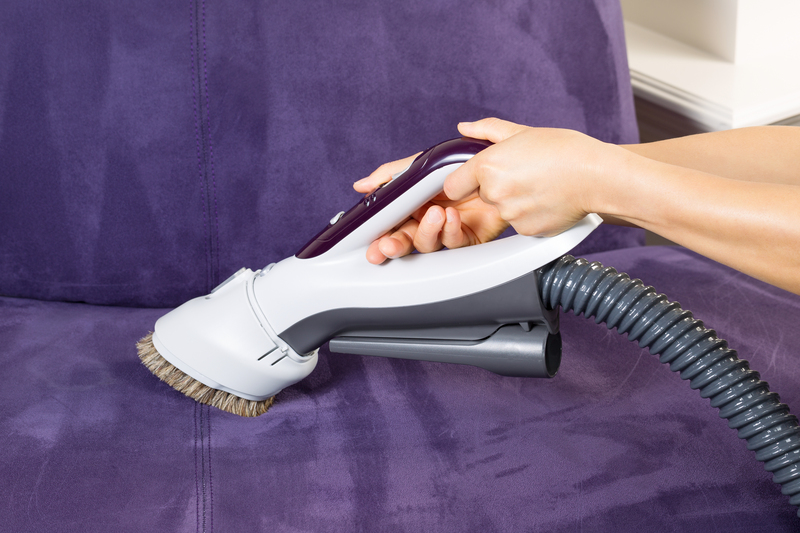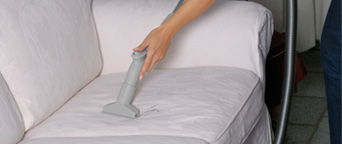Effortlessly Eliminate Grease: Step-by-Step Guide to Pristine Enamel Oven Trays
Posted on 25/05/2025
Effortlessly Eliminate Grease: Step-by-Step Guide to Pristine Enamel Oven Trays
Are you tired of scrubbing your enamel oven trays for hours, only to find stubborn grease clinging on? Grease removal can seem like a never-ending battle for every home cook, but with the right methods, you can restore your enamel oven trays to their former sparkling glory without extra effort or harsh chemicals. This comprehensive guide is designed to help you eliminate grease from oven trays effortlessly, ensuring your kitchen surfaces remain spotless and your food tastes fresher every time.
Understanding Enamel Oven Trays
Before diving into the best techniques for grease removal, it's important to understand what makes enamel oven trays unique. Enamel-coated trays are crafted from durable metal with a layer of vitrified glass poured over the surface. This creates a non-porous, glossy coating that resists staining, scratching, and rusting.
- Non-Stick Properties: Enamel's smooth surface is designed to resist food sticking, making cleaning easier.
- High Heat Resistance: Enamel oven trays can handle high cooking temperatures without degrading.
- Corrosion Protection: The glass-like finish protects against rust, provided the coating isn't chipped or cracked.
Enamel trays are prized for their lasting durability and aesthetic appeal. However, like any kitchen tool, they are susceptible to grease buildup--resulting from roasting, baking, and daily use.

Why Grease Builds Up on Oven Trays
Grease accumulation is a common issue that affects the appearance, hygiene, and performance of your cooking trays. Understanding the causes is the first step to prevention:
- Fatty Foods: Roasting meats and oily vegetables releases fats that melt and adhere to the enamel.
- Sugar Caramelization: Baking desserts leads to burnt sugar residues that mingle with grease, causing stubborn stains.
- Insufficient Cleaning: Incomplete cleaning after each use can cause layers of residues to form over time.
- High Oven Temperatures: Prolonged exposure to heat can 'bake on' grease, further embedding it into the tray's surface.
Consistent cleaning routines and the right tools are vital to eliminate old grease and keep your enamel trays in tip-top shape.
Essential Tools and Materials for Grease Removal
You don't need commercial-grade chemicals to achieve pristine enamel oven trays. Here's what you'll need for effortless cleaning:
- Baking Soda - A natural abrasive that lifts grease and neutralizes odors.
- White Vinegar - Dissolves tough stains and breaks down grease residues.
- Lemon Juice - Enhances cleaning action with fresh scent and mild acidity.
- Dish Soap - Cuts through oil, making it easier to rinse away grime.
- Non-Abrasive Sponge or Microfiber Cloth - Essential to avoid scratching the enamel coating.
- Soft Scouring Pad (optional) - For stubborn spots, use carefully without excessive pressure.
- Rubber Gloves - Protect your hands during scrubbing and soaking.
- Large Sink or Tub - Provides ample space for soaking the tray.
- Plastic Scraper or Spatula - Loosens baked-on debris gently.
Tip: Avoid metal scouring pads and harsh cleaners, as these can damage the delicate enamel coating.
Step-by-Step Process to Eliminate Grease from Enamel Oven Trays
Step 1: Preparation and Safety First
- Let the Tray Cool: Never immerse a hot or warm tray directly in water, as sudden temperature changes may crack the enamel.
- Wear Gloves: Protect your hands from residue, heat, and cleaning solutions with sturdy rubber gloves.
- Remove Loose Debris: Use a plastic scraper or spatula to lift off burnt bits and loose food particles before beginning the main cleaning routine.
Step 2: Soak the Enamel Tray
- Fill a Large Sink or Tub: Submerge the tray in hot water mixed with a generous squirt of dish soap.
- Let It Soak: Allow the tray to soak for at least 30-60 minutes, or overnight for troublesome, baked-on grease.
- Check Progress: After soaking, most surface grease should be easy to wipe away with a non-abrasive sponge.
Step 3: Apply a Baking Soda Paste
- Create the Paste: Mix equal parts baking soda and water (or lemon juice for extra power) to create a thick paste.
- Spread Evenly: Apply the paste liberally across all greasy areas, especially the corners and edges where residues accumulate.
- Let Sit: Allow the paste to work its magic for 20-30 minutes.
Step 4: Scrub Gently
- Use a Non-Abrasive Sponge: Gently scrub the tray in circular motions, focusing on stubborn spots but avoiding harsh pressure.
- Resist Metal Tools: Never use wire brushes or steel wool, which can permanently damage the enamel coating.
- Stubborn Grease? For any remaining grease, reapply the baking soda paste and repeat the scrubbing process.
Step 5: Vinegar Rinse
- Spray or Pour: Apply white vinegar across the surface. You'll notice a fizzing reaction as the vinegar lifts away baking soda, grease, and stains.
- Rinse Thoroughly: Use warm water to rinse away all residues until the tray looks glossy and clean.
Step 6: Dry and Inspect
- Use a Clean Towel: Dry the tray thoroughly to prevent water spots or rust around any exposed edges.
- Inspect: Check for any missed spots and repeat the necessary steps as required for sparkling results.
Alternative and Advanced Grease-Busting Techniques
The Power of Steam Cleaning
Steam is a natural and effortless way to eliminate grease from enamel oven trays. Here's how:
- Boiling Water: Place the tray in your sink and carefully pour boiling water over it, covering all stained areas.
- Cover and Wait: Place a lid or another tray over the top and let the steam work for about 10 minutes.
- Wipe Clean: Grease should loosen enough for easy removal with a sponge or soft cloth.
Enzyme-Based Cleaners
Some eco-friendly, enzyme-powered cleaning sprays target grease and baked-on food. Spray liberally, allow to stand according to label instructions, and wipe clean--no heavy scrubbing required!
Avoid These Common Cleaning Mistakes
- Harsh Chemicals: Bleach, ammonia, and abrasive cleaners (including oven cleaner sprays meant for metal) can damage your enamel tray and void its warranty.
- Scratching Tools: Avoid steel wool or metal spatulas, which compromise the smooth enamel finish.
- Skipping Regular Cleaning: Infrequent cleaning leads to extreme build-up, making each cleaning session much harder and riskier for your trays.
How to Maintain Pristine Enamel Oven Trays
Once your oven tray is spotless, it's best to adopt habits that prevent tough grease accumulation in the future:
- Always Line the Tray: Use parchment paper, silicone baking mats, or foil for ultra-easy cleanup after roasting or baking greasy foods.
- Clean Promptly: Wash trays soon after use to prevent grease and food from bonding permanently to the enamel.
- Avoid Abrasives: Stick to gentle tools and cleaners, so your enamel tray's coating remains intact for years of use.
- Store Properly: Make sure trays are completely dry before stacking or storing to avoid chips and scratches.
Bonus Tip: Wipe trays down with a vinegar-soaked cloth after each wash to remove any lingering residues and boost shine.

Frequently Asked Questions: Effortlessly Clean Enamel Oven Trays
Can I put enamel oven trays in the dishwasher?
*Some* enamel trays are dishwasher safe, but frequent cycles may dull the finish over time and, in some cases, cause chipping at the tray's edges. For safer and longer-lasting results, always wash by hand using the gentle steps outlined above.
What if I have burnt-on carbon stains?
For extremely burnt or carbonized stains, try a longer soak with stronger baking soda paste, or use an enzyme cleaner designed for tough stains. Persistently blackened spots may require repeated applications; avoid scraping as this can damage the enamel.
Will these methods work for other types of oven trays?
Techniques here are optimized for enamel oven trays but can also work for stainless steel or non-stick trays--though always check your manufacturer's recommendations before applying vinegar or baking soda paste.
Conclusion: Maintain Sparkling, Grease-Free Enamel Oven Trays
Achieving pristine enamel oven trays doesn't have to be a laborious chore. With these step-by-step grease elimination techniques, you can restore your trays to their gleaming best--effortlessly and safely. By embracing simple, eco-friendly ingredients and regular maintenance, you'll not only save time but also extend the life of your ovenware.
Adopt these grease-fighting habits today and enjoy a cleaner, healthier, and more inviting kitchen where baking and roasting become truly rewarding!
- Clean promptly after each use
- Soak and scrub using gentle, natural cleaners
- Avoid harsh abrasives to protect your tray's enamel coating
- Incorporate preventative habits for ongoing pristine results!
Ready to banish grease? Follow this step-by-step guide next time you clean, and enjoy the satisfaction of effortlessly gleaming enamel oven trays--every time you cook.







